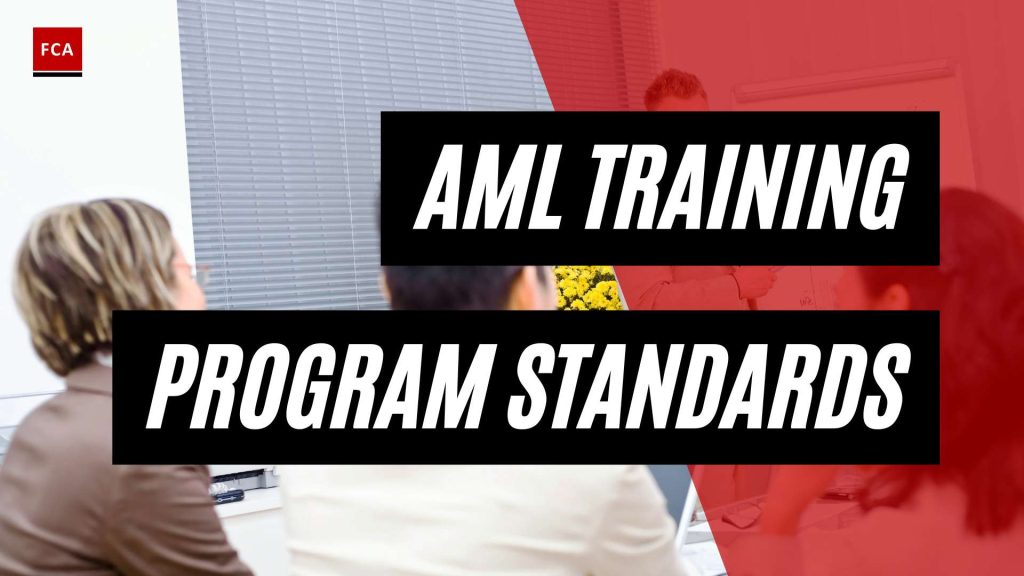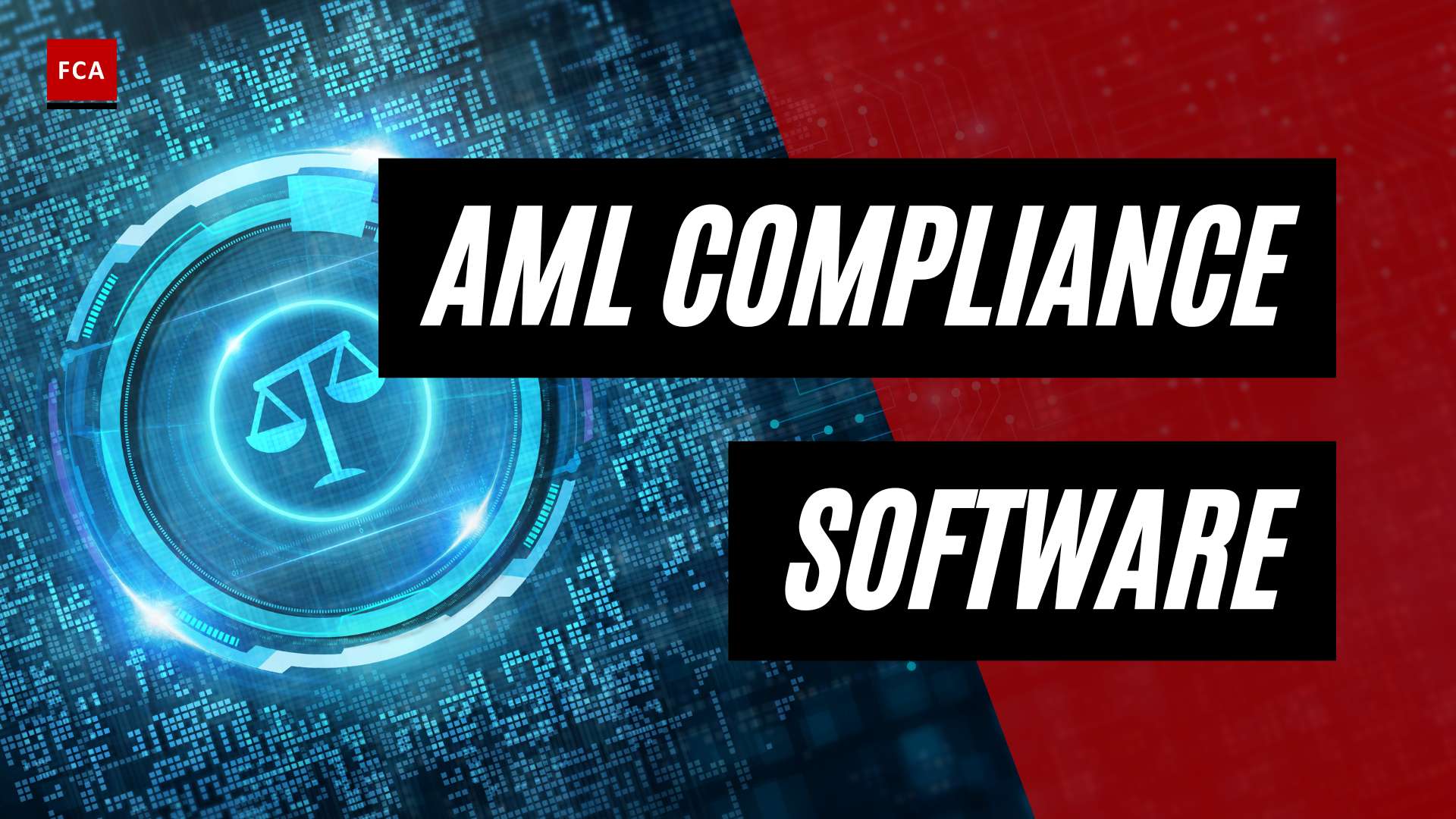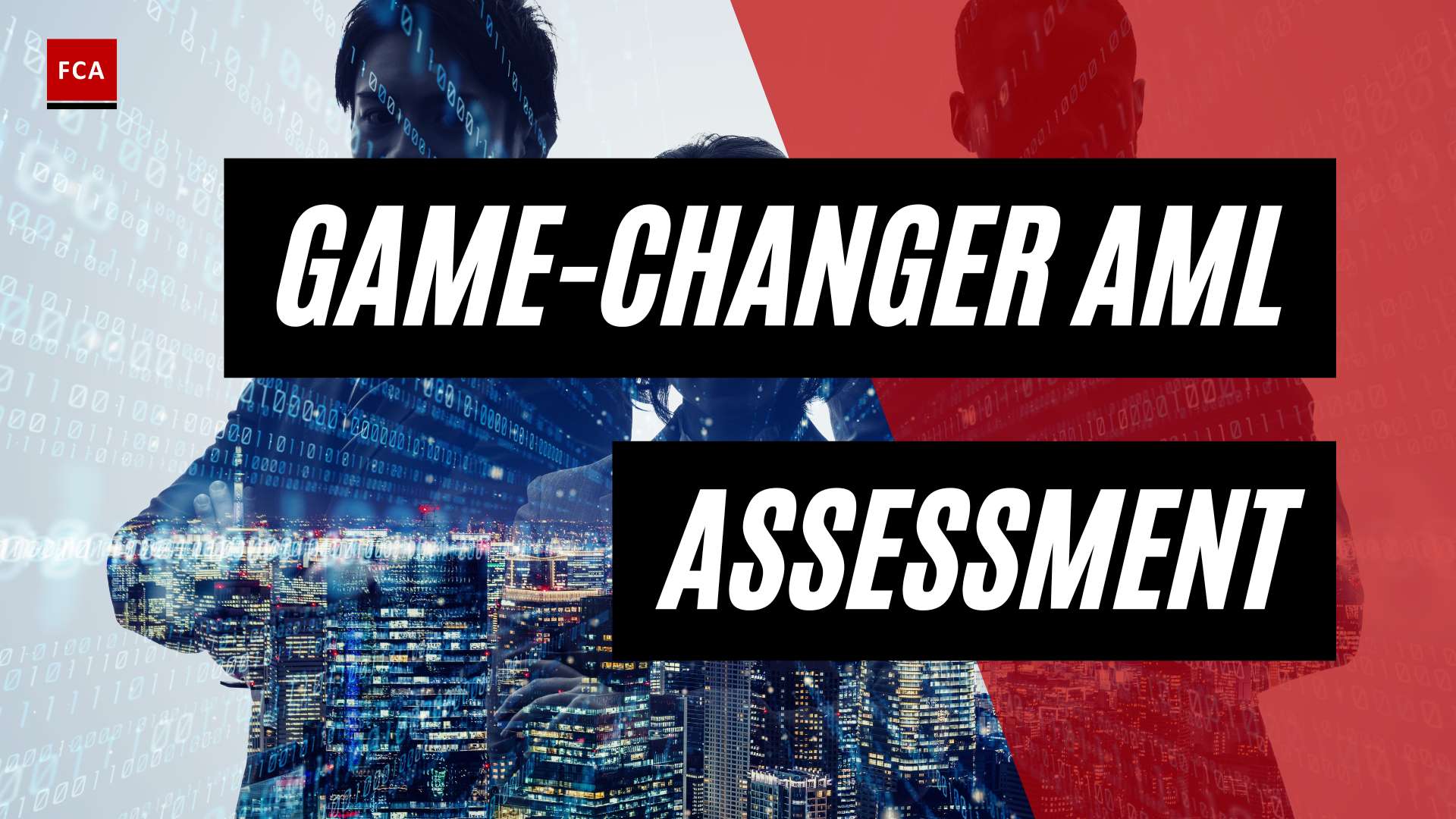Regulatory Requirements for AML Training
To combat the increasing threat of money laundering and terrorist financing, regulatory bodies worldwide have established stringent requirements for Anti-Money Laundering (AML) training. AML training is a critical component of an organization’s compliance program, ensuring that employees are equipped with the knowledge and skills necessary to detect and prevent illicit financial activities.
Importance of AML Training
The importance of AML training cannot be overstated. Training plays a vital role in creating a culture of compliance within organizations and ensures that employees understand their responsibilities in preventing money laundering and terrorist financing. A well-designed and comprehensive AML training program helps employees recognize red flags, understand reporting obligations, and implement effective risk mitigation measures.
Regulators recognize the significance of AML training in the fight against financial crime. The Head of the UK’s Financial Conduct Authority (FCA) has emphasized the high expectations regulators have for the quality of AML training. They expect employees to have a good understanding of key AML topics (AML UAE). Regulators worldwide are increasingly focusing on the effectiveness and relevance of AML training programs.
Expectations from Regulators
Regulators expect organizations to design AML training programs that are tailored to their specific needs. Training should cover the company’s unique risk profile, products, services, and customer types. The Joint Money Laundering Intelligence Taskforce (JMLIT) in the UK emphasizes the importance of customizing AML training to individual job roles within a firm to ensure its relevance and effectiveness. The UAE Central Bank enforces clear expectations that all relevant staff within a firm must undergo AML training, with appropriate refresher training at regular intervals.
Regulators also expect AML training programs to engage employees effectively. Training should use real-world examples and case studies to make the content relevant and applicable to their day-to-day activities. This approach helps employees understand the practical implications of their roles in combating money laundering and terrorist financing.
AML Training Program Standards
AML training program standards vary across jurisdictions and industry sectors. However, some common elements can be found in effective training programs. These include:
- Comprehensive coverage of AML laws, regulations, and best practices.
- Practical guidance on identifying and reporting suspicious transactions.
- Training on customer due diligence and Know Your Customer (KYC) procedures.
- Awareness of emerging trends, typologies, and new regulations in AML.
- Ongoing training and refresher courses to ensure knowledge remains up to date.
- Documentation and record-keeping of training activities to demonstrate compliance.
Organizations should consult the specific regulatory requirements applicable to their jurisdiction and industry to ensure their AML training programs meet the necessary standards. By adhering to these standards, organizations can build a strong foundation for AML compliance and contribute to the collective efforts in combating financial crime.
For more information on AML training, including best practices and certification options, visit our article on aml training certification.
Key Components of an Effective AML Training Program
To build a strong foundation in anti-money laundering (AML) compliance, organizations must establish an effective AML training program. Such a program consists of key components that ensure employees are equipped with the necessary knowledge and skills to identify and prevent money laundering activities. The key components of an effective AML training program include:
Risk Assessment and Tailoring
An effective AML training program begins with a comprehensive risk assessment. This assessment helps organizations identify the specific AML risks they face and tailor the training program accordingly. By understanding the unique risks associated with their industry, products, and customer base, organizations can develop targeted training that addresses these risks (Flagright).
By tailoring the training program to address specific risks, organizations can ensure that employees receive the most relevant and impactful training. This approach helps employees understand the specific red flags and suspicious activities they should be vigilant about, enabling them to identify and report potential money laundering activities effectively.
Training Topics and Content
A comprehensive AML training program covers a range of topics to provide employees with a holistic understanding of money laundering and their roles and responsibilities in preventing it. The training should cover regulatory requirements, money laundering typologies, customer due diligence, transaction monitoring, reporting obligations, and the use of technology and tools in AML compliance.
The content of the training program should be designed to engage employees effectively. Real-world examples and case studies can make the training relevant and applicable to their day-to-day activities. This approach helps employees understand how money laundering schemes operate and how they can play a role in preventing them.
Engaging and Effective Training Delivery
The delivery of AML training plays a vital role in its effectiveness. Training sessions should be conducted in a manner that engages employees and encourages active participation. The use of interactive elements, such as quizzes, role-plays, and group discussions, can enhance employee learning and retention.
Training programs should be conducted at least annually, or more frequently if there are significant developments in the financial crime area. This ensures that employees are kept informed about the latest illicit finance trends, red flags, and regulatory updates. Ongoing training and reinforcement help employees stay vigilant and up-to-date with evolving money laundering tactics.
To assess the effectiveness of the training program, organizations should conduct regular evaluations and assessments. This helps ensure that employees retain and apply the knowledge gained from the training sessions. By identifying areas for improvement, organizations can continuously enhance their AML training program, strengthening their overall AML compliance efforts.
By incorporating these key components into their AML training programs, organizations can build a strong foundation in AML compliance. These components help ensure that employees have the knowledge and skills necessary to identify and prevent money laundering activities, protecting the organization and the financial system as a whole.
Consequences of Poor AML Training Programs
Implementing a robust and effective AML training program is essential for organizations to meet regulatory requirements and mitigate the risk of money laundering and financial crime. Failing to invest in adequate AML training can have significant consequences, including fines and penalties, reputational damage, loss of trust, and operational disruptions.
Fines and Penalties
Non-compliance with AML training standards can result in substantial fines and penalties imposed by regulatory bodies. For instance, Capital One was fined $390 million for willful and neglectful violations of the Bank Secrecy Act (BSA), failing to report $16 billion worth of transactions despite warnings from regulators.
The financial consequences of non-compliance may include disgorgement of funds obtained through illicit activities, costs of remediation, potential lawsuits, and even suspension of business activities or revocation of licenses. These penalties can have a severe impact on an organization’s financial stability and long-term viability.
Reputational Damage and Loss of Trust
AML non-compliance can have serious reputational implications for organizations. Failure to meet AML training requirements can damage an institution’s public image, erode customer trust, and strain relationships with other banks and financial institutions. The negative publicity surrounding non-compliance incidents can lead to a loss of business and potential customer attrition.
Reputation takes years to build, but it can be tarnished in an instant if an organization is associated with money laundering or other illicit activities. Rebuilding trust and restoring a damaged reputation can be a challenging and time-consuming process.
Operational Disruptions and License Revocation
Poor AML training programs can result in operational disruptions for organizations. Regulatory authorities may require suspensions of certain activities until systems and procedures are improved to meet compliance standards. These disruptions can have a significant impact on an organization’s day-to-day operations, leading to delays, increased costs, and resource-intensive remediation efforts.
In extreme cases of non-compliance, regulatory authorities have the power to revoke an institution’s license to operate. License revocation can have catastrophic consequences for financial institutions, resulting in the loss of their ability to conduct business and severe financial repercussions.
Organizations must recognize the potential consequences of inadequate AML training programs and take proactive steps to ensure compliance. By investing in comprehensive AML training, organizations can mitigate the risk of financial penalties, protect their reputation, and maintain the trust of regulators, customers, and stakeholders.
To build an effective AML compliance program and avoid the consequences of poor training, organizations should focus on ongoing training and awareness, customization and relevance of training materials, and regular evaluation and assessment of the effectiveness of their AML training programs. For more information on building a strong AML compliance program, refer to our article on building an effective AML compliance program.
Best Practices for AML Training
To build a strong foundation in anti-money laundering (AML) compliance, financial institutions must implement effective AML training programs. Here are some best practices to consider when designing and delivering AML training:
Ongoing Training and Awareness
AML training should not be a one-time event. To stay ahead of evolving financial crime trends, ongoing training and awareness are crucial. Financial institutions should conduct AML training at least annually, or more frequently if there are significant developments in the financial crime area. This ensures that staff members are informed about the latest illicit finance trends, red flags, and regulatory updates (CBIZ). By providing continuous education, employees can stay vigilant and effectively identify suspicious activities.
Customization and Relevance
Effective AML training programs should be tailored to the specific needs of each financial institution. Generic, one-size-fits-all training may not adequately address the unique risks faced by individual organizations. Training should cover a range of topics, including recognizing red flags of money laundering, understanding customer due diligence requirements, identifying high-risk customers, and comprehending the reporting requirements under the Bank Secrecy Act (BSA). By customizing the training to reflect the institution’s specific risk profile and business activities, employees can better understand and apply AML principles in their day-to-day roles.
Evaluation and Assessment
Regular evaluation and assessment of the effectiveness of AML training programs are essential. This ensures that employees retain the knowledge gained from training sessions and can apply it effectively in their work. By monitoring the effectiveness of the training, financial institutions can identify any gaps or areas for improvement and make necessary adjustments. Evaluation can be conducted through quizzes, case studies, or practical exercises to reinforce learning outcomes (CBIZ). Continuous assessment also helps to demonstrate compliance with regulatory requirements and provides documentation for audits.
By following these best practices, financial institutions can develop robust AML training programs that effectively educate employees on AML compliance measures. Ongoing training and awareness, customization and relevance, and evaluation and assessment are key pillars in building a strong AML training program. To learn more about AML compliance programs, explore the five pillars of AML compliance, and discover steps to create a successful program, refer to our article on building an effective AML compliance program.
Building an Effective AML Compliance Program
To establish a strong defense against money laundering and ensure compliance with anti-money laundering (AML) regulations, organizations need to develop an effective AML compliance program. This section will explore the key components and steps involved in building such a program.
Understanding AML Compliance Programs
An AML compliance program is a comprehensive framework of policies, procedures, and controls established by financial institutions and businesses to detect, prevent, and report instances of money laundering and terrorist financing. These programs are designed to safeguard the integrity of the financial system and ensure compliance with applicable laws and regulations. By implementing an AML compliance program, organizations can mitigate their exposure to financial crime risks and contribute to the global fight against money laundering.
Five Pillars of AML Compliance
An effective AML compliance program is built upon the five pillars of AML compliance:
-
Designation of a Compliance Officer: Organizations should designate an individual or team responsible for overseeing and managing the AML compliance program. This compliance officer plays a crucial role in ensuring that all AML activities are appropriately planned, implemented, and monitored (Unit21).
-
Development of Internal Controls: Internal controls are policies, procedures, and systems that organizations establish to detect and prevent money laundering. These controls should address customer due diligence (CDD), suspicious activity monitoring, and reporting requirements. They help organizations identify and mitigate potential risks associated with money laundering.
-
Establishing a BSA Training Program: Training and education are essential components of an AML compliance program. Organizations should develop a comprehensive training program to ensure that employees understand their roles and responsibilities in preventing money laundering. This training program should cover topics such as recognizing red flags, reporting suspicious activity, and staying up to date with regulatory changes.
-
Independent Audits and Reviews: Regular audits and reviews of the AML compliance program are crucial for identifying any weaknesses or gaps. External auditors can objectively assess the program’s effectiveness, provide recommendations for improvement, and help organizations comply with regulatory standards. These audits contribute to enhancing an organization’s AML efforts (KYC2020 Blog).
-
Performing Customer Due Diligence: Customer due diligence involves conducting thorough checks and verifications to understand the nature of the customer’s business and assess the risk of potential money laundering activities. It is essential to establish robust processes for identifying and verifying customer identities, monitoring customer transactions, and conducting ongoing due diligence.
Steps to Create a Successful Program
Creating a successful AML compliance program involves several key steps:
-
Risk Assessment: Conduct a comprehensive risk assessment to identify and analyze potential money laundering risks associated with customers, products, services, and geographical locations. This assessment allows organizations to tailor their AML strategies and allocate resources effectively.
-
Written Policies and Procedures: Develop clear and concise AML policies and procedures that outline the organization’s approach to AML compliance. These policies should cover various aspects, including customer due diligence, suspicious activity reporting, and record-keeping requirements. It is crucial to keep these policies up to date with the evolving regulatory landscape (Unit21).
-
Training and Awareness: Implement an ongoing training and awareness program to educate employees on AML regulations, red flags, and reporting obligations. Regular training ensures that employees are equipped with the knowledge and skills necessary to identify and prevent money laundering activities (KYC2020 Blog).
-
Independent Audit and Review: Regularly assess and evaluate the effectiveness of the AML compliance program through independent audits and reviews. These assessments provide valuable insights into the program’s strengths and weaknesses, helping organizations enhance their AML efforts.
By understanding the components of an effective AML compliance program and following the steps outlined above, organizations can establish a robust framework for combating money laundering and ensuring regulatory compliance. Implementing best practices and staying up to date with AML training regulations and AML training best practices will help organizations build a strong foundation in the fight against financial crime.








